This article was medically reviewed by Danielle Jacks, MD. Danielle Jacks, MD is a Surgical Resident at Ochsner Clinic Foundation in New Orleans, Louisiana. She has over six years of experience in general surgery. She received her MD from Oregon Health and Science University in 2016.
This article has been viewed 155,339 times.
Getting glass in a wound can be very painful, and has the potential for infection if it is not treated swiftly. You should remove the glass right away in order to prevent the spread of infection and avoid an allergic response. If you have gotten glass in a wound, first try to remove the glass at home, but seek medical attention if the injury is too severe.[1]
Steps
Removing Glass at Home
-
1Use a pair of tweezers to grab the glass. When only a small portion of glass is found in the wound, it can be easily removed at home.[2]
- Carefully pull it in the direction from which it entered.
- Use sterilized tweezers that are sharp.
- Don't apply too much pressure to the glass shard to avoid crushing it into smaller pieces.
- If you don't have a steady hand, try having a friend remove the glass.
- After removal, thoroughly wash the area with soap and running water.
-
2Poke the glass out with a needle if it is fully embedded. If the glass is fully embedded in your skin, tweezers will be unable to grip its surface.[3]
- Use a small needle dipped in alcohol to remove the splinter.
- Before removing the splinter, make sure that the area is cleansed using an antiseptic solution such as alcohol or betadine.
- With the help of the needle, you can carefully and gently dislodge the glass.
- Then you can fully remove it with a pair of tweezers.
- After, wash the area thoroughly with soap and water.
Advertisement -
3Soak the splinter area in baking soda and warm water to loosen the skin. If you can’t remove the glass with tweezers or a needle, soak the area in a solution of one tablespoon of baking soda in warm cup of water.
- This should be done twice a day.
- Soaking will soften and loosen the skin, and draw the splinter to the surface.
- The glass may eventually work its way out of your skin after several days.
Seeking Medical Assistance
-
1Seek immediate medical attention if any of the following signs are present. Although getting a small glass splinter can usually be handled at home, there are circumstances under which medical attention is warranted.[4]
- If the glass or the splinter is found under a fingernail, it will be difficult to remove without medical tools. This should be removed right away because it can cause the presence of infection.
- If you experience the formation of pus, unbearable pain (8 out of 10 on the pain scale), tenderness, swelling, or redness you may be suffering from an infection and need antibiotics prescribed by a doctor.
- If the glass shards are exceptionally large, they might affect sensation or movement and it could even cause nerve and blood vessel damage.
- If you have previously removed glass from the wound, but the area is inflamed, there may be fragments retained under the skin that should be examined by a doctor.
-
2Get medical assistance if a child has a glass wound. It can be difficult to remove glass from a child's wound, because they have a much lower tolerance for pain.[5]
- Children may move around and cause themselves further injury during the removal process.
- This is why it is best to have the glass removed by a doctor or other medical professional.
- Having the child in a safe and controlled environment will expedite removal and make it much less risky.
-
3Go to the doctor if you fail to remove glass at home. Deeply embedded glass should be removed from a wound by a doctor to prevent further injury, especially if you crush it by mistake.[6]
- Sometimes when you try to remove glass at home, it can break into smaller pieces and fragment within your skin.
- In case this happens and there are fragments left, go to the nearest emergency department right away so that a doctor can remove what is left.
- Additionally, if glass is deeply embedded in the skin an anesthetic agent must be applied to ensure a painless removal.
-
4Get a professional diagnosis. Most glass in found in wounds is clearly visible and doesn't require any diagnostic testing, but sometimes glass is embedded so deeply that it can't be seen from the skin's surface.[7]
- In cases where the glass is embedded deeply, an ultrasound, CT scan, or an MRI is usually ordered to provide a better view of the affected area.
- Large splinters or glass shards that have deeply penetrated require a CT scan or an MRI to determine if has caused damage to your bones, nerves, or blood vessels.
- An x-ray might also be ordered to determine the location of the splinter within you before removal.
-
5Understand the method by which a doctor will remove the glass. If you need to have the glass removed by a medical professional, it can be helpful to be aware of the procedure you are likely to undergo.[8]
- A surgeon will usually make an incision from the point where the glass entered.
- A surgical clamp will be used to carefully spread the surrounding tissue.
- Glass from your wound can then be removed using either alligator forceps (basically surgical tweezers).
- If the glass has penetrated too deeply, the tissue will have to be dissected in order to access it for removal.
References
- ↑ https://www.mottchildren.org/health-library/sid42412spec
- ↑ https://kidshealth.org/en/parents/splinters-sheet.html
- ↑ https://www.mottchildren.org/health-library/sid42412spec
- ↑ https://www.stanfordchildrens.org/en/topic/default?id=splinters-90-P02851
- ↑ https://www.healthychildren.org/English/health-issues/conditions/skin/Pages/Splinters-and-Other-Foreign-Bodies-in-the-Skin.aspx
- ↑ https://www.aad.org/public/everyday-care/injured-skin/burns/remove-splinters
- ↑ https://www.aafp.org/afp/2007/0901/p683.html
- ↑ https://www.aafp.org/afp/2007/0901/p683.html
Expert Q&A
-
QuestionMy wound is not healing, even though I am taking antibiotics. What should I do?
 Jonas DeMuro, MDDr. DeMuro is a board certified Pediatric Critical Care Surgeon in New York. He received his MD from Stony Brook University School of Medicine in 1996. He completed his fellowship in Surgical Critical Care at North Shore-Long Island Jewish Health System and was a previous American College of Surgeons (ACS) Fellow.
Jonas DeMuro, MDDr. DeMuro is a board certified Pediatric Critical Care Surgeon in New York. He received his MD from Stony Brook University School of Medicine in 1996. He completed his fellowship in Surgical Critical Care at North Shore-Long Island Jewish Health System and was a previous American College of Surgeons (ACS) Fellow.
Board Certified Critical Care Surgeon A non-healing wound can come from a variety of causes, including a retained foreign object, diabetes, infection, and malnutrition. You should see a qualified physician so they can determine the reason that the wound is not healing. A doctor can then apply the best treatment.
A non-healing wound can come from a variety of causes, including a retained foreign object, diabetes, infection, and malnutrition. You should see a qualified physician so they can determine the reason that the wound is not healing. A doctor can then apply the best treatment.
About This Article
If glass is embedded deep within your skin or underneath your fingernails, seek medical attention right away. However, if you have glass in a surface wound, remove it by using sharp tweezers to grab it with steady, but gentle, pressure. If you can't get it out, you may need to soak the wound in a solution of baking soda and warm water to push the glass out. After you have pulled out the glass, wash the area thoroughly with some soap and water. For more tips on pulling out a stubborn piece of glass, keep reading!

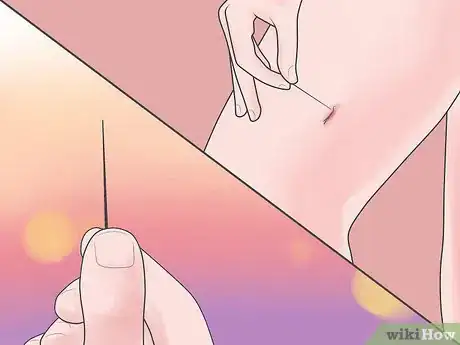






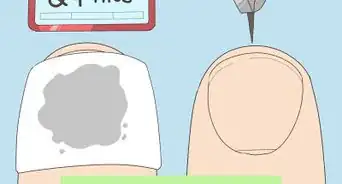
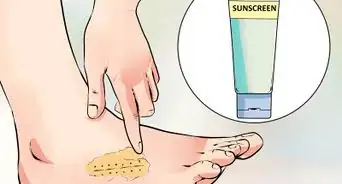

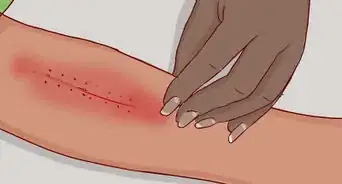

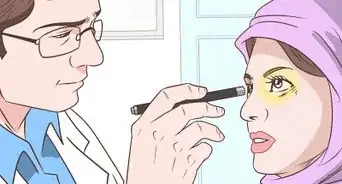
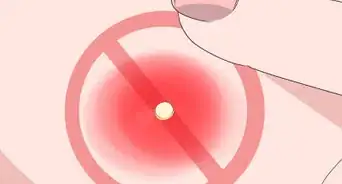
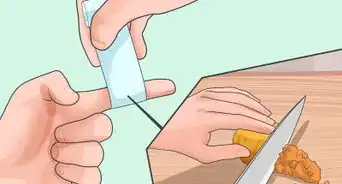
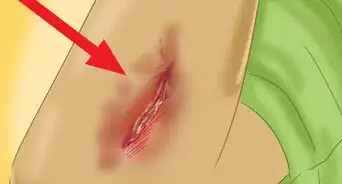

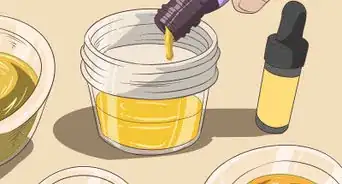








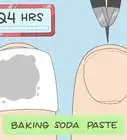
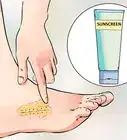

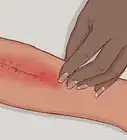



































Medical Disclaimer
The content of this article is not intended to be a substitute for professional medical advice, examination, diagnosis, or treatment. You should always contact your doctor or other qualified healthcare professional before starting, changing, or stopping any kind of health treatment.
Read More...